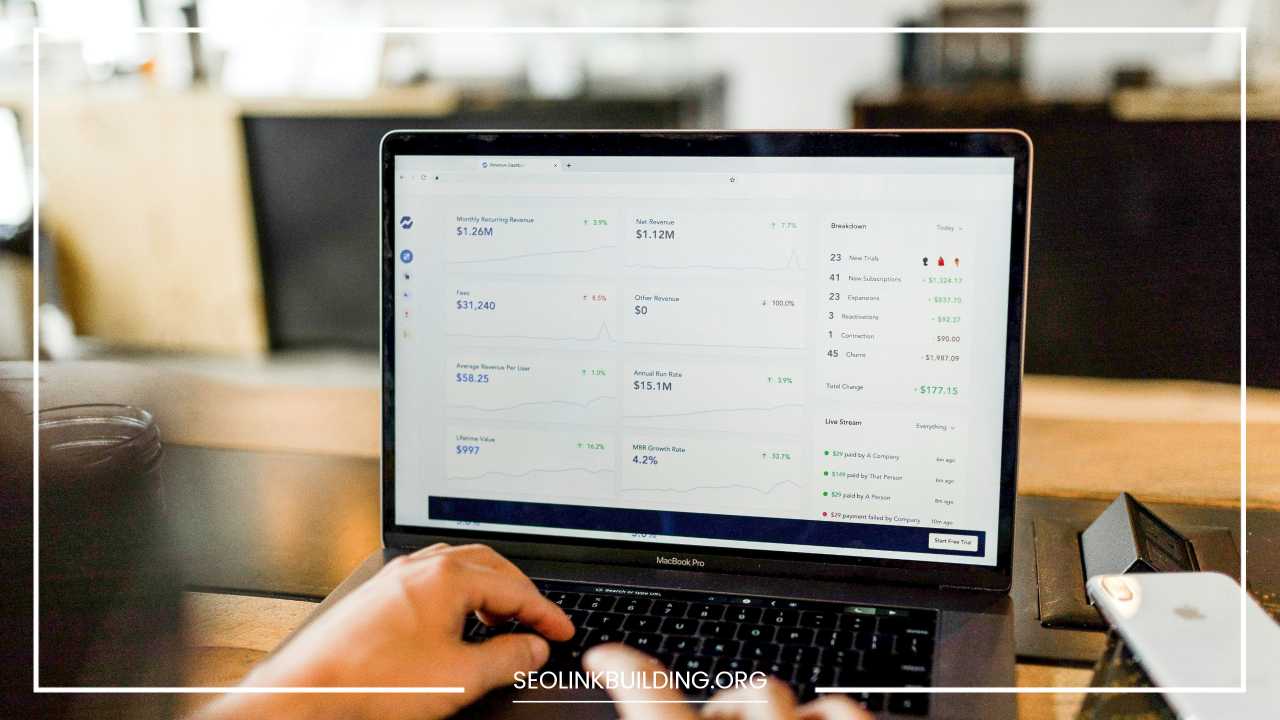What is PPC Marketing

PPC Marketing
PPC Marketing: A Comprehensive Guide to Boosting Your Online Presence
In today’s fast-paced digital landscape, businesses are continually searching for innovative ways to reach their target audience, build brand awareness, and drive consistent growth.
Among the various digital marketing strategies, pay-per-click (PPC) advertising has emerged as a highly effective tool for generating immediate visibility and driving qualified traffic to websites.
By providing businesses with a way to secure prominent placements in search engine results and other advertising networks, PPC marketing offers measurable, scalable, and targeted opportunities.
This comprehensive guide delves deep into the world of PPC marketing, exploring its core components, key benefits, strategies, and best practices to maximize campaign success.
What is PPC Marketing?
Pay-per-click (PPC) marketing is an online advertising model where advertisers pay a fee each time one of their ads is clicked.
It’s essentially a way of buying visits to your website, rather than earning them organically through search engine optimization (SEO). PPC ads can appear on various platforms, but search engines like Google and Bing are among the most popular.
These search engines allow businesses to display ads on search engine results pages (SERPs) whenever users search for specific keywords or phrases related to their products or services.
One of the most significant advantages of PPC is the ability to target highly specific user searches, providing businesses with the opportunity to reach potential customers who are already interested in their offerings.
By leveraging PPC marketing effectively, businesses can enjoy immediate traffic, increased brand exposure, and improved ROI.
The Mechanics of a PPC Campaign
A PPC campaign involves several interconnected components that work together to ensure ads are shown to the right audience at the right time.
By mastering each of these elements, businesses can create campaigns that are more likely to achieve their marketing goals. Below, we break down the key elements involved in a successful PPC campaign.
1. Keyword Research and Selection
Keywords are the cornerstone of any PPC campaign. They are the terms or phrases that users type into search engines when looking for information, products, or services.
The success of a PPC campaign heavily depends on selecting the right keywords that align with both user intent and business objectives.
Effective keyword research involves identifying high-traffic keywords that are relevant to your business and have a reasonable level of competition.
Advertisers typically use keyword research tools such as Google Keyword Planner, Ahrefs, SEMrush, or Moz to find relevant keywords and assess search volume, competition, and cost-per-click (CPC) estimates.
The key is to strike a balance between keywords that are highly relevant but not overly competitive, ensuring your ads have a better chance of securing clicks without draining your budget.
2. Creating Compelling Ad Copy
Once keywords are selected, the next step is to create engaging ad copy that resonates with your target audience. PPC ads typically include a headline, a brief description, and a display URL.
The ad copy should be compelling, relevant, and direct. It must also be aligned with the keywords you’ve chosen to target.
The headline is the first thing users will see, so it needs to grab attention immediately. It should clearly communicate the benefit of clicking the ad.
The description must support the headline, providing more details and creating a sense of urgency or exclusivity.
A good PPC ad should have a strong call-to-action (CTA) that motivates users to take immediate action, whether that’s making a purchase, signing up for a newsletter, or downloading an app.
3. Bidding and Budget Management
PPC platforms typically work on an auction-based system where advertisers bid for ad placements. The bid amount is the maximum amount an advertiser is willing to pay each time someone clicks their ad.
However, the bid amount alone does not guarantee top placement. Other factors, such as the quality and relevance of the ad, also come into play.
Each platform, such as Google Ads or Bing Ads, provides a bidding system where advertisers can set their daily budget and maximum bids.
It’s essential to manage bids strategically, ensuring the campaign stays within budget while maximizing visibility and performance.
4. Ad Rank and Quality Score
Ad Rank is a metric used by search engines to determine the position of your ad on the results page. The higher the Ad Rank, the more likely your ad is to appear at the top of the SERP. The Ad Rank is calculated based on a combination of factors, including:
- Bid amount: The maximum amount you’re willing to pay per click.
- Quality Score: This metric evaluates the relevance and quality of your ad and landing page. It takes into account factors like keyword relevance, ad copy quality, and expected click-through rate (CTR).
- Landing page experience: The user experience on your landing page is crucial. A well-designed, relevant landing page with fast loading times will increase your Quality Score.
A high Ad Rank, combined with a strong Quality Score, leads to better ad placements and lower CPC, resulting in better ROI.
5. Creating High-Converting Landing Pages
Once users click on an ad, they are directed to a specific landing page on your website. The landing page is a critical component of a PPC campaign because it must align closely with the ad they clicked.
If there is a disconnect between the ad copy and the landing page, visitors may leave your site immediately, leading to high bounce rates and wasted ad spend.
Landing pages should be simple, focused, and designed to convert visitors into customers. This could mean making a purchase, filling out a lead form, signing up for a webinar, or any other action aligned with your business goals.
The content on the landing page should reflect the ad’s messaging and provide a clear, compelling CTA.
Types of PPC Ads
PPC advertising encompasses a wide variety of ad formats, each designed to serve a different purpose and reach distinct audience segments. Here are the most common types of PPC ads you’ll encounter:
1. Search Ads
Search ads are text-based ads that appear on SERPs when users search for relevant keywords. These are the most widely recognized form of PPC advertising and are typically displayed at the top or bottom of search results.
Since these ads match user intent, they tend to have a high click-through rate (CTR), especially if the ad copy aligns well with the search query.
Search ads are perfect for businesses targeting users who are actively searching for specific products or services. For example, a user searching for “best online shoes” may see a search ad for a shoe retailer offering a sale.
2. Display Ads
Display ads are visual ads that appear on websites within a display network, such as the Google Display Network (GDN).
These ads can take the form of banner ads, image ads, or video ads. They are typically placed on websites that are relevant to your business or target audience.
Display ads are ideal for building brand awareness and reaching users who might not be actively searching for your products but are still within your target market.
They are also effective for retargeting campaigns, where businesses target users who have visited their site but didn’t convert.
3. Social Media Ads
Social media platforms like Facebook, Instagram, Twitter, and LinkedIn also offer PPC advertising options.
These platforms allow businesses to target users based on detailed demographic information, interests, behaviors, and location.
Social media ads can take the form of image or video posts, carousel ads, or even sponsored stories in users’ feeds.
Social media PPC is excellent for reaching specific customer segments and driving engagement, especially for visual-based campaigns that highlight products or services.
4. Shopping Ads
Shopping ads are designed for eCommerce businesses. These ads display product images, prices, and store information directly on the SERP or shopping platforms like Google Shopping.
Shopping ads are perfect for businesses looking to drive immediate sales by showcasing products to users who are actively searching for them.
These ads help businesses stand out by displaying product details directly on the search engine results page, which can increase CTR and ultimately boost sales.
Benefits of PPC Marketing
PPC advertising offers numerous advantages for businesses looking to grow their online presence and achieve specific marketing objectives. Let’s explore the key benefits of PPC marketing:
1. Targeted Reach
PPC advertising enables businesses to target specific audience segments based on a wide range of criteria, including demographics, geographic location, interests, and online behavior.
By fine-tuning targeting, businesses can ensure their ads reach the most relevant audience, resulting in higher conversion rates and reduced waste in ad spend.
2. Measurable Results
One of the most significant advantages of PPC advertising is its ability to deliver measurable results. Unlike traditional forms of advertising (e.g., print or TV ads), PPC provides detailed data on key metrics like clicks, impressions, conversion rates, and cost-per-conversion.
This allows businesses to track ROI and make informed decisions to optimize campaigns.
3. Instant Traffic and Visibility
Unlike SEO, which can take months to show significant results, PPC advertising can generate immediate visibility and traffic.
Businesses can launch a campaign and start driving clicks to their website within hours, making PPC an excellent choice for time-sensitive promotions or product launches.
4. Flexibility and Control
PPC campaigns give businesses full control over several aspects, such as budget, targeting, bidding strategies, and ad scheduling.
This flexibility allows for real-time adjustments, ensuring campaigns remain aligned with business goals and provide the best possible performance.
5. Brand Awareness
Even if users don’t click on a PPC ad, the mere presence of the ad can increase brand visibility. Consistent exposure to ads across search engines and display networks can increase overall brand awareness and create a lasting impression on potential customers, which can pay off in the long term.
Working with PPC Ad Agencies: Expertise and Guidance
While many businesses manage PPC campaigns in-house, partnering with a PPC ad agency can provide valuable expertise, resources, and advanced tools that can significantly improve campaign performance. Let’s explore the benefits of working with an agency:
1. Campaign Setup and Management
PPC agencies take care of the entire process, from keyword research and ad creation to bid management and performance tracking.
They have the experience and tools to create highly optimized campaigns that are more likely to achieve your marketing goals.
2. Expertise and Experience
PPC agencies bring a wealth of knowledge and industry experience to the table. They understand how to navigate various platforms, optimize campaigns, and ensure that ad spend is being used efficiently to maximize returns.
3. Advanced Tools and Technologies
Agencies use sophisticated tools to track and optimize campaigns, making use of automation and AI-driven features to enhance performance and improve results.
4. Reporting and Analysis
Agencies provide regular reports on campaign performance, offering insights into what’s working and where improvements can be made.
This data-driven approach allows businesses to make more informed decisions and refine their strategies.
How to Choose the Right PPC Ad Agency
Selecting the right PPC ad agency is crucial for maximizing the impact of your campaigns. Here are key factors to consider when making your choice:
1. Experience and Expertise
Look for an agency with proven experience in managing PPC campaigns within your industry. They should have a solid understanding of your business goals and know how to achieve them through effective PPC strategies.
2. Communication and Transparency
Choose an agency that values clear and transparent communication. The agency should provide regular updates on campaign performance and be open to feedback.
3. Pricing and Contracts
Be sure to understand the agency’s pricing structure, whether it’s based on a retainer, performance, or hourly rate. Ensure the pricing aligns with your business budget and marketing goals.
4. Client Testimonials and Reviews
Read client testimonials and case studies to gauge an agency’s track record and reputation. Positive reviews can indicate that the agency is reliable and effective in driving results.
Final Thoughts
PPC marketing is a powerful and dynamic advertising model that can help businesses of all sizes achieve significant online visibility, drive targeted traffic, and boost conversions.
By understanding the key components of a successful PPC campaign, leveraging the expertise of a professional agency, and continuously optimizing campaign performance, businesses can harness the power of PPC to reach their marketing goals and fuel growth in an increasingly competitive digital environment













